I had to do it. I couldn?t resist. Even though I?d vowed not to get any new plants until fall planting season when I saw the one gallon Pride of Madeira just begging for a new home I succumbed to my impulse. I rationalized this plant was on my wish list and will be drought tolerant so I wasn?t being totally irresponsible.
I?ve always wanted an echium fastuosum on my hillside. I admire those huge spires of purple-blue flowers whenever I see them in other gardens. These are tough plants getting by with no summer water once established and the flower spikes are bee magnets. I covered it with a layer of shade cloth for a few days because it was so hot when I planted it. This will help it establish more quickly while the roots take hold in the soil.

In your own garden it?s wise to establish a drought to-do list. I?m talking about what plants get your precious water and what to let go.
As we enter another dry year many of our ornamental and fruit trees are dying. Many were watered along with the lawn you have now let go brown. Others might have been surviving on natural rainfall. Whatever the case in your garden don?t let your trees die.
Nature has already killed an estimated 12 million trees in Calif. forests since the drought began four years ago. Most of these have fallen victim to bark beetles that attack trees weakened by drought.
In our own neighborhoods, trees are a long-lived asset. A tree is not something that can be easily replaced. It?s OK to appropriately water trees. Dying trees can be a safety hazard and removing a dead tree is expensive.
It takes years to grow a tree to mature size. Save and use shower and cooking water to help them out. Maybe it?s time to install an simple laundry-to-landscape system to water your landscape trees. Or set up a separate drip or soaker hose for your trees and give them a good deep drink at least once or twice a month. And remember that the tree?s feeder roots are not at the base of the trunk but out at the drip line and a little beyond.
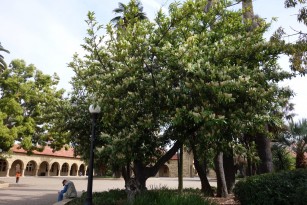
A rule of thumb for determining when to irrigate is when 50% of the water has been depleted from the soil in the plants? root zone. This allows a buffer of water in the soil in case the weather suddenly turns hot and windy and applies to trees, shrubs and perennials.
Sandy soils hold less water than clay soils and must be irrigated more frequently. A common misconception is that it takes more water to grow plants in sandy soil than in clay soil. Actually the total amount required for the whole year is the same for both soil types. The amount of sunlight, wind, temperature and humidity control how much water a plants needs – the soil is only the reservoir.
To check the water content in the soil dig 8-16 inches down into the soil with a trowel, shovel or soil tube and feel the soil. At about 50% available water:
* Course soil appears almost dry and forms a ball that does not hold shape.
* Loamy soil forms a dark ball that is somewhat moldable and can form a weak ribbon when squeezed
between the finders.
* Clayey soil forms a good, dark ball and makes a ribbon an inch or so long and slightly sticky.
If you are planning to plant some new trees this fall, be sure they are drought tolerant natives or low water use non-natives. There are many nice specimens to choose from. And don?t skimp on the mulch.
It?s important to maintain our existing tree canopy and plant for the future. Even in times of drought, no especially in drought, planting and stewardship of trees is critical. Not just for their future but for ours as well.


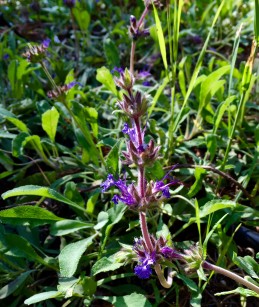
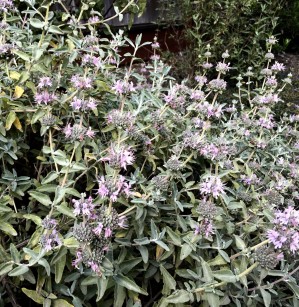
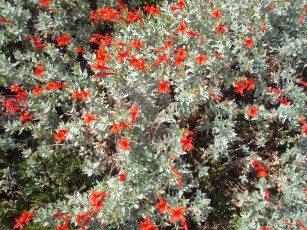
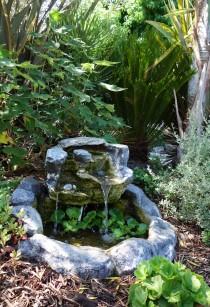
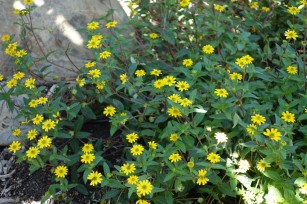
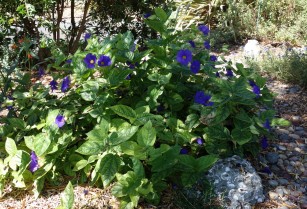
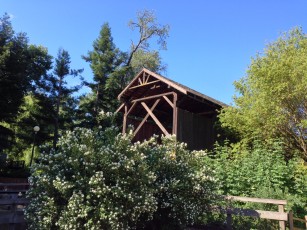


 , stone, and permeable paths and driveways add visual interest to the landscape and don’t require irrigation. Improving your property’s soil quality aids in saving water regardless of the plants grown there. Organic materials added to the soil help establish a strong root system for plants. Nutrients in the soil allow the plants to become stronger, too. Adding a layer of mulch increases the plant’s efficiency by retaining moisture and keeping the soil temperature stable.
, stone, and permeable paths and driveways add visual interest to the landscape and don’t require irrigation. Improving your property’s soil quality aids in saving water regardless of the plants grown there. Organic materials added to the soil help establish a strong root system for plants. Nutrients in the soil allow the plants to become stronger, too. Adding a layer of mulch increases the plant’s efficiency by retaining moisture and keeping the soil temperature stable.